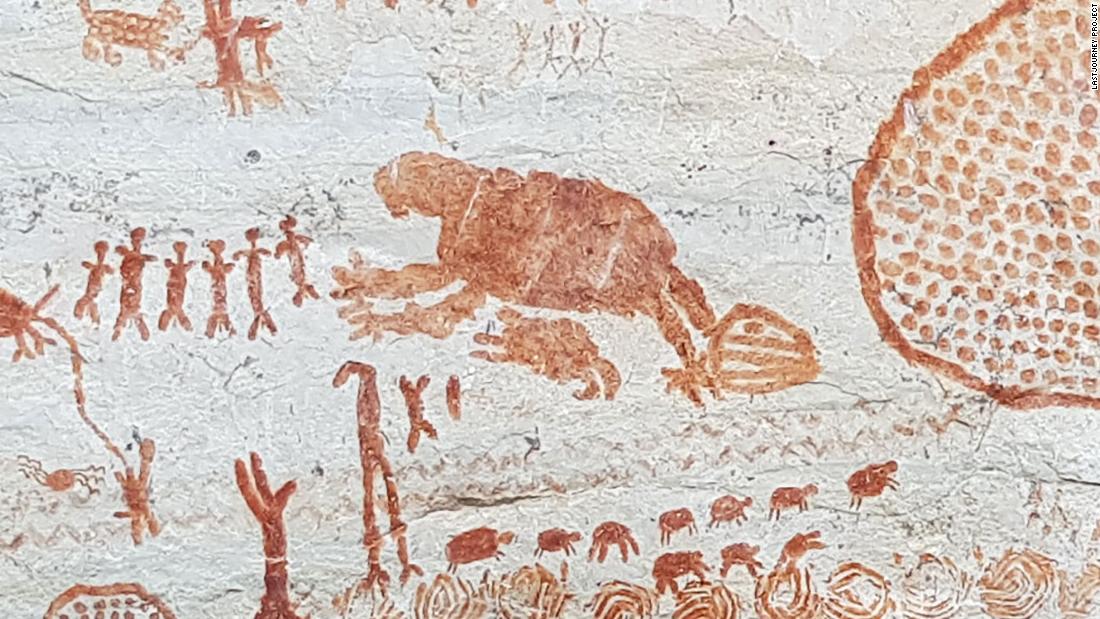“(The art work) have the entire variety of Amazonia. Turtles and fishes to jaguars, monkeys and porcupines,” stated learn about creator Jose Iriarte, a professor in the Division of Archaeology on the College of Exeter in the UK.
Iriate calls the frieze, which most probably would were painted over centuries, if now not millennia, “the ultimate adventure,” as he stated it represents the arriving of people in South The usa — the ultimate area to be colonized via Homo sapiens as they unfold around the globe from Africa, their native land. Those pioneers from the north would have confronted unknown animals in an unfamiliar panorama.
“They encountered those large-bodied mammals they usually most probably painted them. And whilst we wouldn’t have the final word, those art work are very naturalistic and we are ready to peer morphological options of the animals,” he stated.
However the discovery of what scientists time period “extinct megafauna” a few of the dazzlingly detailed art work is arguable and contested.
Different archaeologists say the outstanding preservation of the art work counsel a a lot more contemporary beginning and that there are different believable applicants for the creatures depicted. For instance, the large flooring sloth known via Iriarte and his colleagues may in reality be a capybara — a large rodent not unusual as of late around the area.
Ultimate phrase?
Whilst Iriarte concedes the brand new learn about isn’t the last word on this debate, he’s assured that they’ve discovered proof of early human encounters with one of the crucial vanished giants of the previous.
The group known 5 such animals within the paper: a large flooring sloth with large claws, a gomphothere (an elephantlike creature with a domed head, flared ears and a trunk), an extinct lineage of horse with a thick neck, a camelid like a camel or llama, and a three-toed ungulate, or hoofed mammal, with a trunk.
He stated they’re widely known from fossilized skeletons, enabling paleontologists to reconstruct what they should have gave the look of. Iriarte and his colleagues have been then ready to spot their defining options within the art work.
Whilst the crimson pigments use to make the rock artwork have now not but been without delay dated, Iriarte stated that ocher fragments present in layers of sediment right through excavations of the bottom underneath the painted vertical rock faces dated to twelve,600 years in the past.
The hope is to without delay date the crimson pigment used to color the miles of rock, however relationship rock artwork and cave art work is notoriously difficult. Ocher, an inorganic mineral pigment that accommodates no carbon, cannot be dated the use of radiocarbon relationship ways. The archaeologists are hoping the traditional artists blended the ocher with some roughly binding agent that may let them get a correct date. The result of this investigation are anticipated in all probability later this 12 months.
Additional learn about of the art work may make clear why those large animals went extinct. Iriarte stated no bones of the extinct creatures have been discovered right through archaeological digs within the instant space — suggesting possibly they were not a supply of meals for the individuals who created the artwork.

